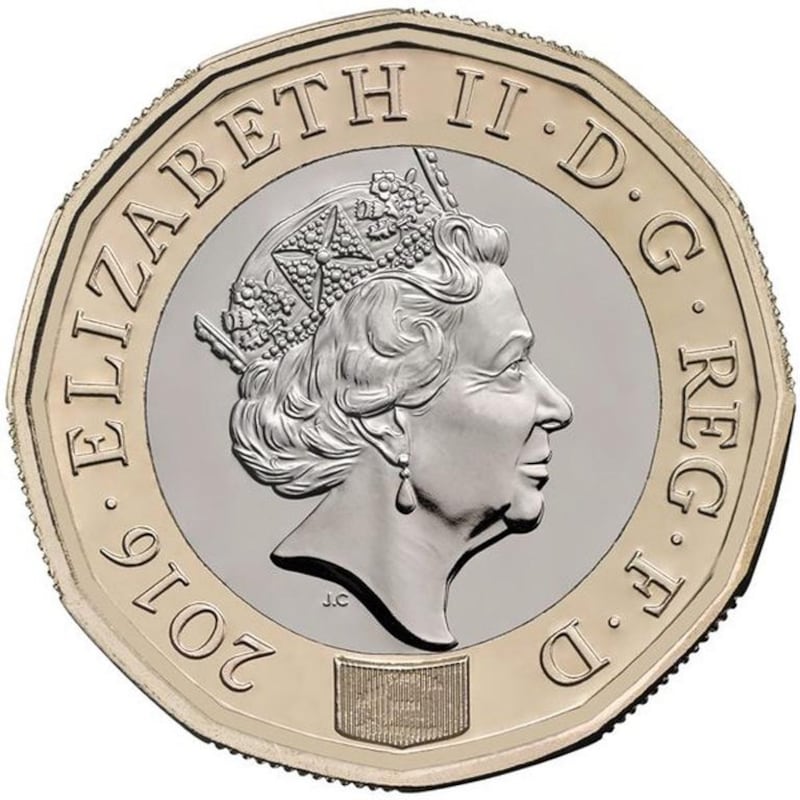DUBLIN // During every visit to the UK, whenever I have handed over a banknote and received pound coins in return, I have groaned out loud.
The pound coin, made of nickel and brass, is a small, chunky object, weighing 9.5 grams. Sitting in the coin pouch of my wallet, the pound discs force it to bulge, straining its seams.
When I then slip my wallet into the back pocket of my jeans, it looks like I have an unusually-sited hernia. If I sit down, I have to remove the wallet altogether so I don’t look as if I’m about to topple over.
But change is finally in the offing.
The British government is poised to introduce a new 12-sided pound coin that will weigh only 8.75 grams – a whole gram less. The new coin will also be thinner and wider.
On Sunday, David Gauke, the chief secretary to the British treasury, announced that the new coin will come into circulation on March 28. The old pound will be phased out and become invalid as legal tender on October 15.
The move, which will replace £433 million (Dh1.95 billion) in coinage, is designed to battle counterfeiting. The Royal Mint estimates that one in every 30 pound coins is fake, and the new coin will include a “hidden high security feature” to prevent currency counterfeiting.
Mr Gauke called the new pound “the most secure of its kind in the world.”
“The pound as we know it will not be round for much longer,” Mr Gauke said. “The introduction of this new one pound coin will be a highly significant event and we are working with the Royal Mint to ensure key industries are ready and to ensure a smooth transition.”
The design of the pound coin was based on the winning entry by David Pearce, a 15-year-old schoolboy who beat 6,000 others in a nationwide contest. The design features a rose, a leek, a thistle and a shamrock – the emblems of England, Wales, Scotland and Northern Ireland – all growing out of a single stem.
It marks the first redesign of the pound since 1983. Last March, the Royal Mint began producing the new coins at its facility in Wales, at a rate of roughly 2,000 per minute, with a view to manufacturing more than 1.5 billion coins.
The new pound will feature an outer border of gold-coloured nickel and brass alloy with the inner area made up of a silver-coloured nickel-plated alloy. The image on the coin will work like a hologram, reading either as a numeric “1” or as the “£” symbol, depending upon the angle from which it is viewed.
The Royal Mint has also pointed out the finely milled grooves on alternate sides of the dodecagon as well as the “micro-lettering” along the rim of the coin, noting that such features make the coin harder to fake.
The pound’s redesign means that hundreds of thousands of machines across the country will have to be reconfigured to recognise the coin’s new shape, size and weight.
The British Parking Association, for instance, estimates that it will have to upgrade parking meters at a cost of at least £90 to £130 per meter – higher if meters also provide change. Roughly 400,000 machines selling tickets, snacks and other items, as well as payphones, will also have to be updated.
Launderettes have coin-operated washing machines. Gyms, museums and railway stations have coin-operated lockers. Shoppers needing a trolley at supermarkets often need to insert a pound coin before they can take it and fill it with groceries.
“Small firms who deal with low-priced items are more likely to be affected by fake currency, but we do have concerns about the extra costs of introducing a new pound coin,” said John Allan, chairman of the Federation of Small Businesses.
“For example, small firms may have to pay out to replace machinery. But there’s no doubt counterfeit coins and notes can seriously damage small businesses. Not only are they worthless but a business could be prosecuted if it passes them on.”
The introduction of the new pound coin is part of a larger revamp of British currency. In September, the government introduced a new £5 note made of a durable polymer. Polymer versions of the £10 and £20 will be rolled out in 2017 and 2020 respectively.
The 8 per cent reduction in the pound coin’s weight is only a by-product of the new design, rather than its primary intent. But as side effects go, this is a good one. For the first time ever, I for one will be glad of a lighter wallet.
SSubramanian@thenational.ae





